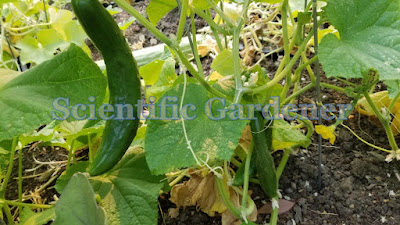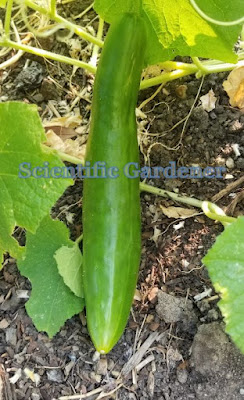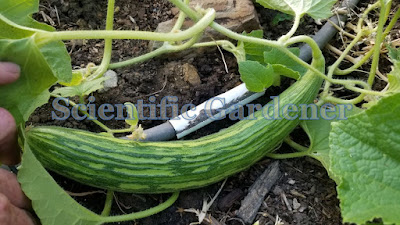One of the primary reasons I decided to grow the Shintokiwa cucumber variety was because other had told me that it was very good. It was apparently introduced to the greater seed community by the Richard Everett Farm. People tended to really like it, so they have continued to offer it through Meadowlark Hearth and through selling to other seed vendors. The Everett Farm shared it with Uprising seeds, where I sourced my seed from.






So, Shintokiwa is a lot like Diva. It is a Beit-Apha-ish kind of cucumber. Very similar to an Asian or Lebanese cucumber when small and very similar to an American cucumber when larger. Fortunately, it lacked the freshly cut clover flavor of some other Beit Alpha varieties and the texture and taste were rather pleasant.








From the pictures, you can see that a large portion of Shintokiwa cucumbers did not turn out very straight. Honestly, I would fault the soil for this issue. The soil I was dealing with tended to make plants underperform, including the Shintokiwa – but the plants continued to do alright. The Shintokiwa did exhibited significantly less catfacing then Diva. I am sure we still had a lot of wind this summer and the skins were not that thick, but perhaps the Shintokiwa has a little thicker skin than the Diva. In any case, if you live in a windy location, I would stay far away from varieties that have catfacing traits to their tender skin – because it will be very difficult to harvest a marketable crop if you grow them.







Overall, I would have to say that the Shintokiwa did a lot better than some of my other regular cucumber varieties that I have grown. Much better than a lot of picklers, for sure – but not definitely not in the same league as the carosello. If I could grow this variety again, I would prefer to try cultivating it in more fertile soil in better conditions to see how well it does.



























































